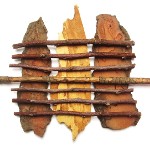 If you are a bit familiar with the music of Simon Balestrazzi and follow his activities, you can hardly imagine a single day, in which he is not busy searching for sounds, processing and combining them in studio, tinkering on his partly self-designed instruments or jamming with colleagues all night long. For several years, it is not unusual for three to five of his Longplayer to come out in one year, more rarely solo, but often from his numerous collaborations: Dream Weapon Ritual, DAIMON, A Sphere of Simple Green, Hidden Reverse and even some more. Back in the Mid-80s, when Balestrazzi was already active for some years, his name was heard a bit more often over here as well. It happened in the course of the second and third wave of (post) industrial music, as more and more notable Italian acts appeared, when his original project T.A.C. (Tomografia Assiale Computerizzata, engl: Computer Tomography) got an international audience. Despite some continuities, his newer works are usually more filigree and playful, the dark atmosphere is notable in a more subtle way. In the following interview, which of course can cover up only a small part of his work, we talked about things old and new, constant and variable from forty years devoted to adventurous music.
If you are a bit familiar with the music of Simon Balestrazzi and follow his activities, you can hardly imagine a single day, in which he is not busy searching for sounds, processing and combining them in studio, tinkering on his partly self-designed instruments or jamming with colleagues all night long. For several years, it is not unusual for three to five of his Longplayer to come out in one year, more rarely solo, but often from his numerous collaborations: Dream Weapon Ritual, DAIMON, A Sphere of Simple Green, Hidden Reverse and even some more. Back in the Mid-80s, when Balestrazzi was already active for some years, his name was heard a bit more often over here as well. It happened in the course of the second and third wave of (post) industrial music, as more and more notable Italian acts appeared, when his original project T.A.C. (Tomografia Assiale Computerizzata, engl: Computer Tomography) got an international audience. Despite some continuities, his newer works are usually more filigree and playful, the dark atmosphere is notable in a more subtle way. In the following interview, which of course can cover up only a small part of his work, we talked about things old and new, constant and variable from forty years devoted to adventurous music.
I first discovered T.A.C. in the early 90s, but it was 2016 that I first heard your works from the late 70s. What can you tell our readers about these early days and how everything started?
It all started when I was quite young, about thirteen. In a short lapse of time I attended a concert by Giancarlo Cardini for piano and prepared piano and soon after an older friend introduced me to all sorts of experimental and innovative music. All of a sudden I realized that those were the sounds I always had in my head. I was studying classical guitar at those times and after a quarrel with my teacher I quit and I started to experiment with springs, objects and cheap Geloso reel-to-reel tape machines.
In what kind of music environment have you been involved back in the days? Was there a special scene in your native Parma?
Well, I came from a not very musical family, not so much music at home… My first record was a gift from my uncle on my eighth birthday. It was “Yellow Submarine” by the Beatles. But what was appealing to me weren’t the nice singalong tunes but the reverse sounds of “It’s All To Much” or the quite wrong chords of “Only A Northern Song”. I guess that something must be encrypted in one’s DNA… Parma didn’t have a scene at all as far as I can remember, maybe just a few cats into jazz or, even worse, fusion. A few years later, after the punk explosion, things got just a little better but except for a few punk or synth pop oriented band that were quite out of my tastes in those times nothing much was going on, in terms of a local scene.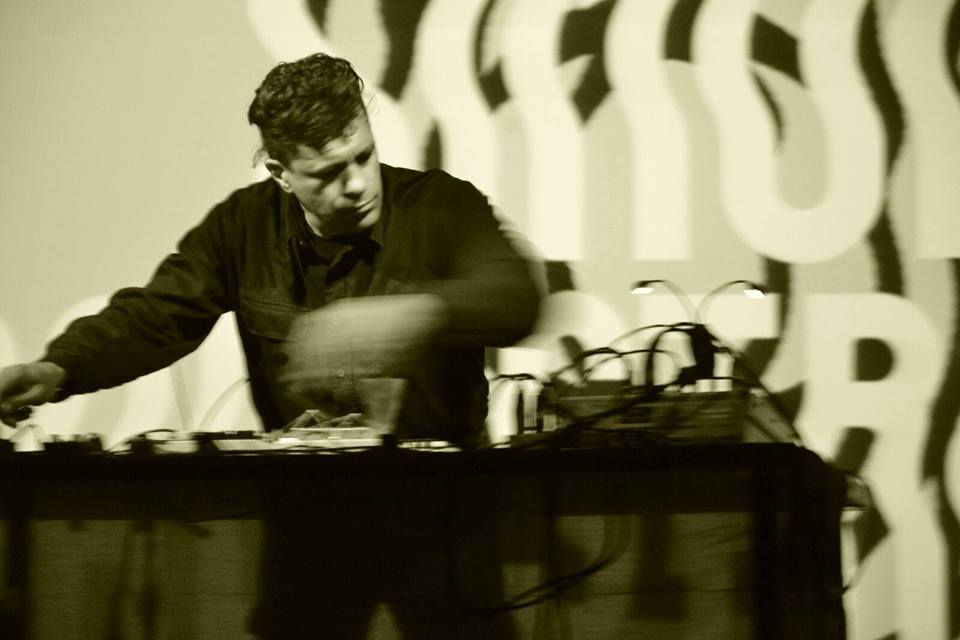
You’re active in music for long and cooperated with lots of people from different fields of music and multi-media. Is there any period of time in your career that you’re nostalgic about as a particularly great time? Were there also times which you have more bad memories of?
I’m not nostalgic, neither have real bad memories. I try not to mistake valuable experiences with events that belong to the past.
You’re one of a few artists connected to the classic Italian Industrial underground as well as to the contemporary experimental scene. Although Antonello Cresti pointed out some continuities in his book, many fans of let’s say the Old Europa Café canon don’t even know labels like Boring Machines and vice versa. What do you think are the main reasons, that there is rather little continuity and overlapping? Do you think it is just a generation thing?
What you say is true, or very common at least. Maybe is partly a generation thing, but mostly I think that it’s just about two different scenes, different tribes. And I don’t feel comfortable with the restrictions and rules of a tribe…
But also I have to admit that nowadays I feel quite disconnected from most of what you call classic Italian Industrial, especially when it comes to bands that reiterate sounds and attitudes like we were 30 years in the past, or even worse, keep flaunting that imagination made of nazi, porn and death… they really seem to me cliché as a surf of garage music. But surf and garage bands are more fun and competent, usually.
Self built instruments were always a part of your music, I think from the beginning. How did this interest come up? Which were the first ones that you made?
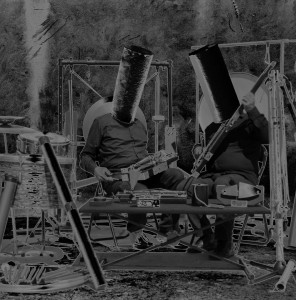 I told you already about watching Cardini preparing the piano for Cage’s “Amores”, that was my first epiphany. I started by substituting the strings of my guitar with wires and experimenting with the springs of an old anglepoise lamp. Soon I was trying to amplify objects with radio earplugs used in reverse to pick up sounds. And there was the rear cover of this album, “Guitar Solos 2”, with the scheme of a mutant guitar of Hans Reichel that was a sort of inspiration, at least about how much you can twist, modify and misuse a regular instrument.
I told you already about watching Cardini preparing the piano for Cage’s “Amores”, that was my first epiphany. I started by substituting the strings of my guitar with wires and experimenting with the springs of an old anglepoise lamp. Soon I was trying to amplify objects with radio earplugs used in reverse to pick up sounds. And there was the rear cover of this album, “Guitar Solos 2”, with the scheme of a mutant guitar of Hans Reichel that was a sort of inspiration, at least about how much you can twist, modify and misuse a regular instrument.
Some of the T.A.C. recordings had elements that came quite close to what’s labeled neofolk or apocalyptic folk. But it was quite early, parallel to bands from the UK, so I’m not sure if this was a significant influence. Did you identify or feel a connection to such styles and fashions in the music sphere?
I think that a groundbreaking event were PTV early albums who were the first, at least the first I was aware of, to go back to folk/traditional song structure and atmosphere, even before Current 93. It was like: yes, it can be done again. I mean, singing songs, ballads. You know, I’ve always been a huge fan of Pearls Before Swine and the Incredible String Band, so when the apocalyptic folk affair started I felt at home. On the other hand I’ve never been interested in what some time later turned into neofolk. Too much standardization, too much crap.
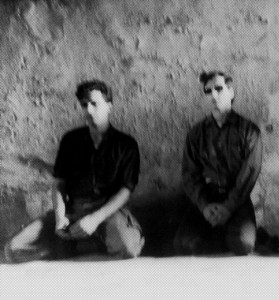 T.A.C. still exists with you, Monica Serra and Corrado Loi. How active are you and will you be in the future?
T.A.C. still exists with you, Monica Serra and Corrado Loi. How active are you and will you be in the future?
Corrado now lives in Spain and me and Monica are busy enough with Dream Weapon Ritual so there are not plans to come back to action as T.A.C. anytime soon. But if it ever this should happen I would like to create a trans-temporal line up… I’d really love to have at least Andrea Azzali (a founder member of T.A.C.) joining us.
When it comes to lyrical content, symbols etc., what would you say are the main differences between old T.A.C. and the major projects that you do today?
Every project, every new album, has its own approach, concept and strategy. It was that way with T.A.C. and so is today. Of course today I have much more experience and less recklessness… T.A.C. was, as well as most of my current ensembles and projects are now, largely influenced by what surrounds me, by reality (or unreality, if that matters). My music and subjects keep relentlessly changing because the world around me is changing. The only thing that I seldom did in the past but now interest me more is to work on sound as pure formal structure instead of always developing an underlying extra musical subject.
You graduated in sound engineering at New York’s Institute of Audio Research. Do you see this graduation and the time abroad as a changing point?
Yes, definitely it was. It was like beginning something really new, from scratch. I quit my job as an architect, I quit Kirlian Camera after a 8-years collaboration, I moved on the other side of the Atlantic without knowing if I ever was to come back or not… It really was a huge shot of fresh energy.
You had always worked with a broader focus on styles, but for some time now you’ve split up your output into quite a number of projects. How did this happen, was there some time, when you thought that your ideas got too diversified to keep them under one umbrella? Or was it more the feeling, that the work processes with your various collaborators got more and more different?
Definitely the second instance: when I start a collaboration with another artist and I think it’s gonna last or has some peculiarities or goals I prefer to work under a band name rather than our own.
What is the difference in the creative processes in for instance Dream Weapon Ritual, DAIMON, Hidden Reverse or A Sphere of Simple Green? Does all these bands’ output develop while spontaneously jamming together?
All those projects are largely based on improvisation but in very different ways and also there are sometimes significant differences from work to work. DWR is something in between free form improv and composition while with ASOSG we really tend towards radical non-idiomatic improv. DAIMON tracks usually build up around the guitar structures of Paolo Monti, which I would consider almost instant composition processes, while Nicola Quiriconi and me improvise quite freely; but after the takes (we always record together) we edit, process and add quite a lot of stuff. With Hidden Reverse and Candor Chasma we usually have a small amount of set rules or a few written structures or maybe just extra musical hints but we mix real time recording with long sessions of overdubs. So the creative process really changes according to the project we are working on.
When you work on your own, do you tend more to improvisation and trial and error, or do you also sometimes work with a compository plan?
Both. As I told you It really depends on the project. For “Asymmetric Warfare”, for example, after I did a very accurate research and selection of recordings from the current middle east conflicts, I conceived a sort of timeline with strict rules, gestures and selection of amplified objects, something like a graphic score, and then recorded everything in a few takes and with very little editing. On the other side in my work based on “Four Systems” by Earle Brown it took ages to find all the ways in which I could force and misuse the original score and the idea itself of indeterminacy.
A lot of records from your bands of today remind of radio-play narratives with dreamlike plots and atmospheres, in which memories and surreal fantasies intermingle. In the same way, the musical direction never follows clear standards, many elements spontaneously flow into each other, such as jazz, new music, drone, field recordings and more in A Sphere of Simple Green. In these nightly dreamy structures you can express and at the same time hide a lot. Why does this “hidden reverse” of our all-day reality appeal to you so much?
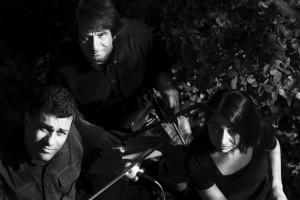 During the years and whatever I play what always attracted me more is to find the less evident aspects of everything, be it sound itself or extra musical matters. The description of my music you’ve just outlined is exactly what I’m striving for. I don’t know where does this attitude come from, I’ve always been inclined to that since I was a young kid sneaking in my parents’ library in search of uncanny art books… I’ve been always persuaded that things are not what they appear to be and that, be it observing reality or analyzing a flux of information, you can find a lot hidden in the interstices…
During the years and whatever I play what always attracted me more is to find the less evident aspects of everything, be it sound itself or extra musical matters. The description of my music you’ve just outlined is exactly what I’m striving for. I don’t know where does this attitude come from, I’ve always been inclined to that since I was a young kid sneaking in my parents’ library in search of uncanny art books… I’ve been always persuaded that things are not what they appear to be and that, be it observing reality or analyzing a flux of information, you can find a lot hidden in the interstices…
Sleep disorder, a subject you referred to in the new Hidden Reverse album, can be something that suppresses the dream production of the unconscious, but at the same time it can be an enormous stimulus. Is this album, which shows many facets of this, inspired by your own experiences?
Yes, I’ve been suffering for insomnia some years ago and so does Massimo Olla right now. Insomnia is a real altered state and even though potentially dangerous and wearing, nonetheless it opens new doors. Lucky enough neither Massimo nor I ever suffered from the most severe and deadly forms of it…
DAIMON had a very filmic appearance to me, often the soundscapes remind of long camera movements. Was this purposed and was it also Nicola Quiriconi’s influence on the music, who contributes the visual parts? What can you further tell us about the stories that you tell with DAIMON? The track titles contain words like “call”, “seeing”, “telescope”, “blind” etc., which are all connected to perception and the senses…
Well, DAIMON music can be perceived as descriptive and somehow it is. But in fact is not conceived to tell actual stories. For sure in our first album we focused quite a lot on memories and traces of things past. To tell you the truth, Nicola did most of the shots before the music was created but they work perfectly with the sound. It was some sort of magic… even the children voices (Nicola’s little son and daughter) sometimes seem to be in sync with their images on screen!
Among your contemporary projects, Dream Weapon Ritual appears to me as the one which is mostly connected to the esoteric and occult, yet this connection stays vague in the music and symbolism. What can you tell us about the background and the ideas behind the new album?
DWR is a rather different bag of tricks… usually we do long sessions of totally freeform improvisation, then after some time we start culling painstakingly the most interesting sections. At this point we decide what the music is suggesting in term of both sound and images and we start to build a concept and a completely new musical structure around the old one that might even disappear at some point. Strangely enough a surreal and rather disturbing ornithological world is what sprung to our mind several times, so we started to think about this weird sparrows… Little by little we were building this odd unlikely Bird Mother cult.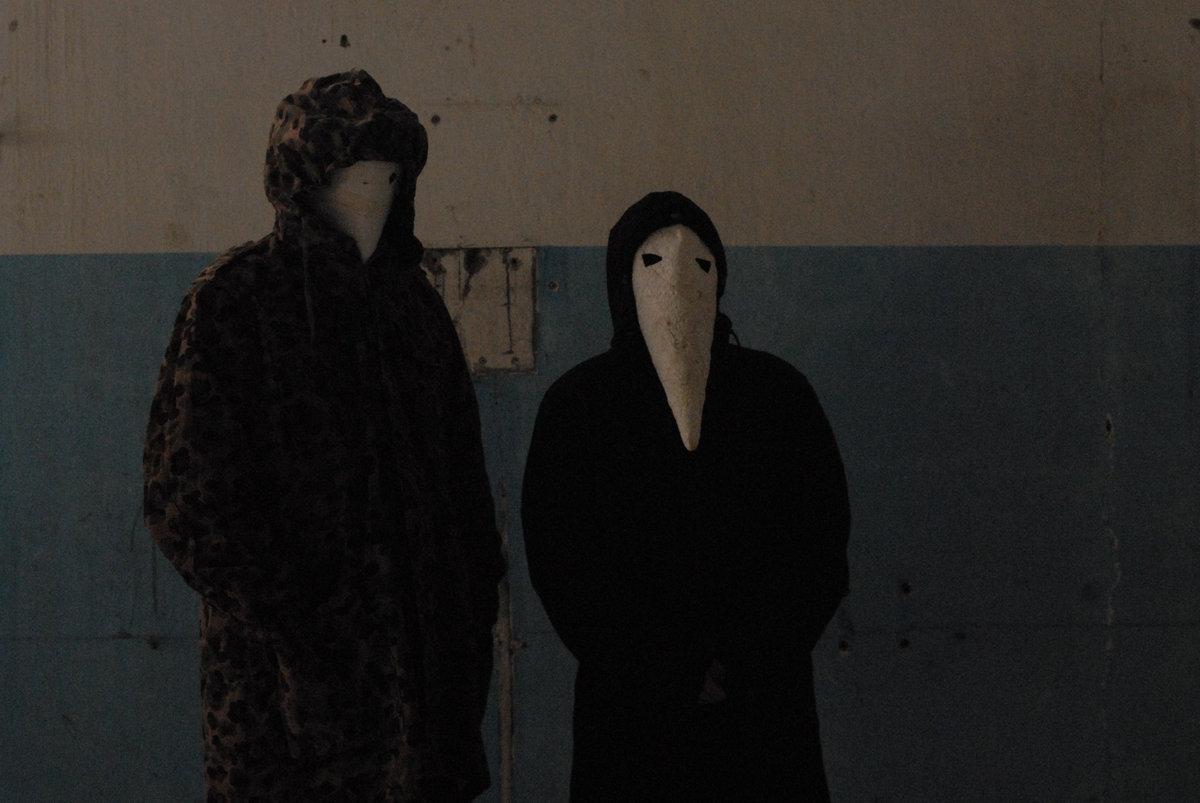
Catchy song structures are very rare in your work, and even if you played folk songs earlier, they were mostly arranged with background noise or similar elements. Nonetheless your music never appears destructive to me and has always room for simple beauty. Did you ever have the idea to more excursions into pop?
I don’t like very much violent and harsh music for the shake of it, in most of the cases I think is an old and too predictable approach. I prefer to be confrontational in a more subtle and pervasive way. I’m not afraid of melody and song structures but I’ve never been able to conceive a straight pop album. I’ve to admit that it could be an interesting challenge, so maybe… one day… you never know.
You repeatedly played with Z’EV, who passed away recently, one remarkable document is the recording of the show at Cavità delle Cinque Colonne. What kind of memories do you have of this evening and of Z’EV in general?
Z’EV was a great artist and wonderful person. I miss him a lot. And I think that he never got all the recognition he deserved.
“Reverbalizations” has a strange story and I wouldn’t call it a document of a live performance. When I was co-curating the Signal festival for TiConZero we invited Z’EV to perform into this artificial cave and I recorded him on two different stereo digital recorders, one very close and one faraway. Unfortunately, for some reason, the close distance recording was erased by one of the sound guys. Years after, while Z’EV was spending some time at my place we did an edit of his solo performance only to discover that the surviving recording was marred by some audience noise.
Later on, when Z’EV was stuck in my place with a serious knee injury, we listened to that tape again just to understand if he could use it somehow. We were almost toying around when something just clicked… Z’EV selected new cues for the edit and inserted some more recordings from different performances and I started doing lots of treatments and looping small sections of the original performance; I also created drones out of resonances of his percussion and people whisperings and did some additional takes with prepared strings and electronics. We were in fact bringing out all the imperfections and accidents of the recording. Still love that album. I’m very proud of it.
 I think every artist has some individual sources of motivation and necessities to go on creating. What would you say is the main motor of your activity?
I think every artist has some individual sources of motivation and necessities to go on creating. What would you say is the main motor of your activity?
As I told you each project has is own concept and rules and this is one of the main things that keep creativity, at least mine, alive and kicking… Also I keep experimenting with different instruments, electronic and acoustic, traditional and self-built; this along with my inclination for collaborative and collective works help quite a lot to investigate new artistic territories without easing down in your usual and predictable comfort zone. In short, I really work hard and try not to take anything for granted.
(U.S. / A. Kaudaht)
Fotos: Laura Dem, Monica Mariani, Alessandro Olla u.a.
